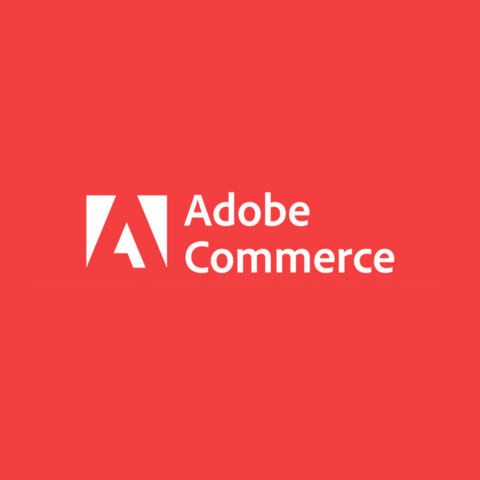Ecommerce platform enables businesses to create and manage online stores, facilitating the buying and selling of digital, physical, and virtual products over the Internet.
Here are 5 major benefits of an Ecommerce platform.
- Makes product and inventory management easy.
- Offers a payment gateway to collect digital payments with cart recovery options.
- Automates your business with third-party integrations and plugins.
- Offers tools and resources for branding and marketing.
- Helps you reach customers worldwide.
Geekflare has researched and listed the best Ecommerce platforms based on features such as pricing, integration, customizations, scalability, user interface, mobile responsiveness, and more.
- WooCommerce – Best for WordPress Integration
- Shopify – Best for Beginners
- Sellfy – Best for Creators to Sell Merchandise
- BigCommerce – Best for Scaling and Large Businesses
- Wix – Best for Drag-and-Drop Site Building with E-commerce
- Square Online – Best for Syncing Online and In-Person Sales
- Squarespace – Best for Design-Focused Online Stores
- Big Cartel – Best for Artists and Creatives
- Shift4Shop – Best for US-based Merchants
- Adobe Commerce [Magento] – Best for Large Enterprises with Extensive Needs
- Bluehost – Best for Simple Stores with Shared Hosting
- OpenCart – Best for Developers Seeking Open-Source Control
- Ecwid – Best for Adding E-commerce to Existing Sites
- Weebly – Best for Small Business
- StoreBuilder by Nexcess – Best for Easy-to-Use Online Store Builder
- PrestaShop – Best for International Sales Focused Stores
- Hostinger (Zyro) – Best for Budget-Conscious and Simple Store Setup
- Show less
You can trust Geekflare
Imagine the satisfaction of finding just what you needed. We understand that feeling, too, so we go to great lengths to evaluate freemium, subscribe to the premium plan if required, have a cup of coffee, and test the products to provide unbiased reviews! While we may earn affiliate commissions, our primary focus remains steadfast: delivering unbiased editorial insights, and in-depth reviews. See how we test.

Shopify
Best for Beginners
- Payment Gateways100+
- Extensions & Add-ons8000+
- Customer Support24/7 Live Chat, Phone, Email
About Shopify
Shopify is a cloud-based commerce platform that empowers entrepreneurs and businesses to build, manage, and expand online businesses. It offers subscription-based pricing plans tailored to your business needs.
Shopify integrates with popular dropshipping apps like DSers, Zendrop, and Spocket to manage and boost your ecommerce sales. Highly scalable, it ensures performance regardless of business size. Its user-friendly admin interface facilitates efficient store management, while customizable, responsive themes ensure brand consistency across desktop and mobile devices.
The security features Shopify provides include SSL certificates and fraud prevention tools like Shopify Protect, Shopify Flow, Card Testing Protection, etc., for secure payment processing and prevention of fraudulent transactions. Built-in analytics provide Shopify users with valuable insights into sales and customer behavior. It provides various premium themes and a custom code for the personalization of the ecommerce store.
Shopify offers built-in SEO features, such as adding auto-generated canonical tags to pages to prevent duplication, auto-generating your store’s robots.txt and sitemap.xml, and title tags with your store name.
You can use Shopify’s payment gateway system, Shopify Payments, or integrate with popular options like PayPal, Razorpay, Amazon Pay, Google Pay, Apple Pay, Affirm, Klarna, or credit cards. With 24/7 customer support and an API for custom integrations, Shopify provides comprehensive solutions for online businesses.
Shopify Features
Offers built-in payment system and fraud detection tools.
Provides analytics for sales, customer behavior, and inventory management.
Gives a wide selection of extensions and plugins available for customization.
Shopify Pros/Cons
Seamless payment processing with various payment gateways.
Offers integrated Point of Sale (POS) system.
Built-in tools for promotion and campaigns.
Shopify’s monthly fees + cost of third-party tools are expensive for some users.
Additional fees apply if you don’t use Shopify Payments.
Customizing themes may require additional investment.

Sellfy
Best for Creators to Sell Merchandise
- Payment Gateways2
- Extensions & Add-ons100+
- Customer SupportEmail
About Sellfy
Sellfy offers a straightforward yet powerful platform to create your online store for selling merchandise, subscriptions, or digital products. If you are someone who hates complexity and still wants effective results, Sellfy is for you!
You can sell your products on YouTube, Instagram, or Soundcloud through your website by including a “Buy Now” button or sharing a simple link.
Boost your sales using email marketing, upselling features, and discount codes with no extra integrations. Customize your store the way you want by adding your logo, creating layouts, and changing colors to complement your brand. The multilingual platform offers optimization for mobile users so that they can access your store via mobile and desktop.
Sellfy accepts payments from over 200 countries and uses safe payment gateways such as PayPal and Stripe. Get a powerful insight through analytics to track best-performing products, view traffic channels and top business locations.
Sellfy Features
Allows creators to sell products of all types, such as physical, digital, video on demand, and subscriptions.
Offers built-in marketing features, such as ad creation and upselling.
Provides add-ons for embedding store links on any website.
Sellfy Pros/Cons
Provides excellent user experience on mobile devices.
Easy to create and use a storefront.
Can be integrated into all major social media platforms.
Sellfy branding cannot be removed in the Basic plan.
Offers only basic analytics, making it difficult to optimize for SEO.

Wix
Best for Drag-and-Drop Site Building with Ecommerce
- Payment Gateways80+
- Extensions & Add-ons500+
- Customer Support24/7 Live Support
About Wix
Wix is a powerful Ecommerce platform. It offers a robust suite of services for online selling, catering to various ecommerce business needs. It provides cloud-based hosting for reliability and accessibility. With tiered pricing plans, Wix includes features like custom domains, storage, and ecommerce capabilities.
Wix is considered one of the best website builders for ecommerce for its drag-and-drop canvas, high scalability, and seamless integration with popular tools like Google Analytics, Google Tag Manager, Yandex Metrica, Facebook Pixel, and more.
Wix secures your ecommerce shop with SSL encryption and secure payment processors. All of its themes are optimized for mobile devices. The analytics dashboard provides detailed insights on sales and customer behavior, allowing you to track your business’ performance and make informed decisions.
Wix offers highly customizable designs and supports various payment gateways, such as Affirm, Afterpay, Apple Pay, Google Pay, iDEAL, or Pay Now by Klarna. You can also collect payments from all popular credit cards, such as AMEX, MasterCard, Visa, and more.
Wix provides built-in SEO tools for better visibility, and you can extend your store’s functionality with plugins for marketing, analytics, and social media. It provides 24/7 customer service and APIs for custom integrations.
Wix Features
Has 80+ trusted payment providers around the world.
Provides a massive collection of third-party apps.
Offers built-in SEO management.
Pros/Cons
100+ free and customizable templates for e-commerce stores.
AI website builder to create your custom store.
Good extra features – create custom quotations for customers, AI logo maker, tasks and reminders, automated responders, etc.
You cannot change your template once the online store is live.
Wix branding comes with a free plan.
Premium features are limited to one store only. It can be a problem if you have multiple stores.

Ecwid
Best for Adding Ecommerce to Existing Sites
- Payment Gateways100+
- Extensions & Add-ons50+
- Customer SupportLive Chat, Email, Phone
About Ecwid
Ecwid is one of the best cloud-based ecommerce platforms. It eliminates the need for server management and integrates seamlessly with various platforms, including social media channels and global marketplaces. You can start with a free plan and upgrade as your business grows. Its scalability ensures it can handle increased workloads without compromising performance. The intuitive user interface allows easy product management and customization of the store’s appearance.
Ecwid offers some of the best features for mobile commerce. It offers an Ecwid mobile app for iOS and Android to manage and grow your online business on the go. You can also download their ShopApp to create a dedicated app for your ecommerce store.
Ecwid is one of the best ecommerce platforms for multi-channel selling. It offers deep integration with various social media platforms so that you can sell on Facebook, Instagram, TikTok, Amazon, and Google.
For security, Ecwid offers free unlimited store backups, PCI DSS Level 1 certified checkout, and auto-scaling of products and traffic. Ecwid supports 70+ payment providers, including Square, Amazon Pay, PayPal, Stripe, Klarna, and more. With no strict product limits, you can add a substantial inventory. Customer support is available through various channels, including email and live chat. Developers can leverage the API for custom integrations.
Ecwid Features
Provides deep integration with WordPress and WooCommerce.
Allows to sell on platforms like Facebook, Instagram, TikTok, Amazon, and Google.
Automates taxes, shipping rates, discounts, and ads.
Ecwid Pros/Cons
Zero transaction fees.
Ecwid mobile app and ShopApp lets you fully use the benefits of mobile commerce.
Multi-lingual storefront. 53 languages are available.
Product filters or variations are not available in the Free and Venture plans.
SEO features are basic.
It offers a stand-alone site option, but it only has one page.

BigCommerce
Best for Scaling and Large Businesses
- Payment Gateways65+
- Extensions & Add-ons1000+
- Customer Support24/7 Chat, Email, Phone
About BigCommerce
BigCommerce is a cloud-based ecommerce website suitable for businesses of all sizes, from startups to enterprises. It offers subscription-based pricing with various tiers to accommodate different business needs.
BigCommerce integrates with third-party services like accounting software like Quickbooks Online, Xero, and Brightpearl and secure payment gateways like PayPal, Stripe, Venmo, Klarna, Square, Apple Pay, Google Pay, Amazon Pay, and Local bank integration gateways.
Highly scalable, BigCommerce adapts to increasing workloads without performance issues. The platform features an intuitive interface for efficiently managing products, orders, and settings. The themes are optimized for mobile performance and offer a lag-free shopping experience on any device.
The multi-channel selling options BigCommerce provides include out-of-the-box for platforms like Facebook, Amazon, Microsoft Ads, Instagram (including Instagram Stories), TikTok, Snapchat (US, UK, and Netherlands users only), Walmart, and eBay. Customer support is available via chat, email, and phone, and APIs are provided for developers to extend functionality. Domain name management is easily handled within the platform.
BigCommerce Features
Provides 10+ free ecommerce templates.
Advanced in-built SEO features.
Comes with an in-built GDPR compliance system.
BigCommerce Pros/Cons
Display up to 600 variations of each product.
Multichannel selling options are provided out of the box.
24 POD integrations are available.
Most of the good themes are paid.
Limitations on customizations.

Square Online
Best for Syncing Online and In-Person Sales
- Payment Gateways4
- Extensions & Add-ons200+
- Customer SupportPhone, Email, Live Chat
About Square Online
Square Online is a cloud-based ecommerce platform empowering businesses to sell products online. It ensures scalability, reliability, and accessibility from anywhere.
Square Online deeply integrates with Square products like Square Point of Sale, Square Marketing, and Square Loyalty. It supports various payment methods like Square Pay, Apple Pay, Cash App Pay, and Google Pay for faster checkout.
Apart from basic ecommerce features, Square Online offers an intuitive interface for easy navigation and a mobile-first design for smooth browsing on all devices. Security features include secure payment gateways and compliance with data protection standards.
Centralized reporting tools track sales, customer data, and loyalty points, while customization options allow tailoring to match brand identity. SEO tools optimize product listings for improved visibility in search engines.
Square Online integrates with Klaviyo, Mailchimp, Printful, Spocket, and more to enable a multi-channel online shopping platform.
Customer support is available via email, phone, and community forums, with APIs provided for custom integrations. Choose from various website themes and easily connect a custom domain to your Square Online store for a branded experience.
Square Online Features
Seamless integration with Square’s payment processing system.
Integrates with social media platforms for online multi-selling.
Provides Square’s point-of-sale (POS) system for offline selling.
Square Online Pros/Cons
Creates an all-in-one ecommerce solution with products like Square Point of Sale, Square Appointments, and Square Payroll.
Free plan for businesses with limited sales volumes.
Easy store setup and management.
Basic customizations and design flexibility.
Lack of advanced ecommerce features like abandoned cart recovery, conditional shipping rules, or built-in blogging capabilities.
Limited third-party integrations.

WooCommerce
Best for WordPress Integration
- Payment Gateways79
- Extensions & Add-ons800+
- Customer SupportLive Chat, Email
About WooCommerce
WooCommerce is a leading ecommerce platform that empowers 5.3M+ WordPress users to create online stores. While WooCommerce is free, you might have to spend money on WordPress hosting, domain registration, and premium extensions or themes for enhanced functionality. The platform integrates with various payment gateways, shipping providers, and marketing tools.
WooCommerce is one of the best ecommerce platforms for customization capabilities. It allows users to modify themes, create customizable templates, and extend functionality through plugins. It supports payment gateways like WooPayments, PayPal, Square, Stripe, and credit card payments.
With WooCommerce users are allowed to optimize product pages to improve search engine visibility with SEO plugins like Yoast SEO, Rank Math, or All-in-One SEO. WooCommerce has a vast library of plugins that let you add almost any functionality to your online store, with advanced features like funnel builder plugins.
While primarily operating within WordPress, WooCommerce can integrate with third-party tools like MailChimp, HubSpot, Klaviyo, and more. The platform supports multilingual sites and offers a wide range of free and premium-compatible themes. Domain management is handled separately through domain registrars.
WooCommerce Features
Allows users to sell a wide range of physical items, digital downloads, and virtual services.
Streamlines the checkout process by creating sales funnels and upsell opportunities through CartFlows.
Offers sales funnel builder plugins to streamline the checkout process and boost sales.
Provides many themes and plugins are available to personalize your online store.
Has mobile-friendly websites with built-in SEO functionalities.
WooCommerce Pros/Cons
WooCommerce is the best free ecommerce platform for setting up an online business.
You get plugins and webhook integrations with almost any popular business tool.
Has a large WordPress community of experts to ask for help and interact.
Only for WordPress users.
Paid WordPress hosting is mandatory.
The setup and customization process can be complicated for first-time users.

Squarespace
Best for Design-Focused Online Stores
- Payment Gateways3
- Extensions & Add-ons1000+
- Customer SupportLive Chat, Email Support
About Squarespace
Squarespace is an all-in-one content management system (CMS) that allows users to create ecommerce websites, host content, register custom domain names, sell products, track analytics, and more with a single subscription.
Squarespace integrates with popular social media platforms like Instagram and Facebook to enable a multi-channel ecommerce website. It is suitable for individuals, small businesses, and creative professionals and caters to designers, artists, photographers, and more.
With an intuitive drag-and-drop interface, Squarespace allows extensive customization through mobile-friendly templates and design options. You get additional features like an SSL certificate, detailed store analytics, and user reports for tracking performance.
Squarespace offers a variety of payment options for its users. They have their own native payment solution called Squarespace Payments, which allows users to accept and manage payments directly through Squarespace.
With Squarespace Payments, you can accept major debit and credit cards from Visa, Mastercard, American Express, Discover, Diners Club, JCB, UnionPay, and Cartes Bancaires. Additionally, it supports Afterpay and Apple Pay.
For those who prefer other payment services, Squarespace also provides integration with third-party payment options such as Stripe, Square, PayPal, Afterpay, and ClearPay. This allows users to choose the best payment service for their business needs.
Additionally, the Squarespace ecommerce UPS integration automatically calculates shipping costs based on their rates. Squarespace offers customer support via chat and email, with an API available for developers. Domain name registration services are also provided.
Squarespace Features
Presents a wide range of professionally designed templates.
Gives an intuitive drag-and-drop website builder.
Built-in SEO and marketing tools.
Squarespace Pros/Cons
Combines website building, hosting, and ecommerce capabilities into a single platform.
0% transaction fees on the dedicated ecommerce plans.
iOS and Android apps available for mobile management
Limited third-party integrations.
Subscription-based selling is only available in the Commerce Advanced plan.

Big Cartel
Best for Artists and Creatives
- Payment Gateways4
- Extensions & Add-ons30+
- Customer SupportChat, Email
About Big Cartel
Big Cartel is a self-hosted ecommerce platform tailored for artists, makers, and small businesses to build an ecommerce website. It runs on its own servers, eliminating the need for external hosting.
Big Cartel is best for artists, handcraft artists, and small businesses looking for a simple ecommerce platform. It’s especially suitable for selling handmade and custom items like clothing and jewelry.
You can list up to 5 products with the free plan, but with the premium plans, you can list up to 500 products. There are no transaction fees, and you can switch plans anytime.
Integration with various marketing tools like Instagram and Mailchimp enhances promotional efforts. The platform offers a clean and intuitive user interface, with mobile apps available for remote store management. Big Cartel provides a secure environment for ecommerce stores, real-time sales dashboards, and basic analytics to track store performance effectively.
Remember that Big Cartel’s simplicity and affordability make it an excellent choice for beginners, while Format (another platform) excels in design functionalities and portfolio presentation for creatives.
Big Cartel Features
Offers free customizable themes.
Provides real-time stats and shipment tracking on all plans.
Has automatic sales tax tracking on all of the plans.
Big Cartel Pros/Cons
Mobile apps for iOS and Android.
All plans are budget-friendly.
Sell physical and digital products.
Basic SEO tools.
Only email support for custom queries.
No abandoned cart saving tools.

Shift4Shop
Best for US-based Merchants
- Payment GatewaysAll major gateways
- Extensions & Add-onsShift4Shop App
- Customer SupportLive Chat, Email
About Shift4Shop
Shift4Shop is a fully hosted ecommerce platform that simplifies online store management for beginners and experts. It handles hosting and maintenance, requiring no software installations or updates from users. It seamlessly integrates with social media and online marketplaces like Google Shopping and Facebook, offering API access for custom integrations.
Shift4Shop is adaptable to any business model, providing an intuitive dashboard for easy store management. Its mobile-ready design ensures compatibility across all devices, while security features like PCI compliance and advanced tokenization safeguard payment data.
With extensive customization options and versatile payment methods, Shift4Shop empowers users to create a tailored online shopping experience. Real-time orders, revenue, and customer activity insights are available through a unified dashboard.
Shift4Shop is one of the best ecommerce platforms with advanced in-built SEO features like free domain name registration, customizable tags, titles, and URLs, PageSpeed optimization, Google AMP for products, breadcrumb links, schema markup, 301 redirects with 404 auto-detects, dynamic XML sitemap generation, etc.
Shift4Shop Features
Offers built-in CRM and SEO tools.
Has no product limit.
Provides unlimited bandwidth.
Shift4Shop Pros/Cons
The platform is essentially free if you use the Shift4 payment gateway and process a minimum of $500 in monthly sales.
Powerful in-built features – single-page checkout, a built-in blog, product and customer reviews, and digital downloads.
Upsell and cross-sell features are available.
Transaction-based fees are 2.9% plus 30 cents per transaction.
Inconsistent and delayed customer support.
![Adobe Commerce [Magento]](https://geekflare.com/wp-content/uploads/2024/05/adobe-commerce-logo.png)
Adobe Commerce [Magento]
Best for Large Enterprises with Extensive Needs
- Payment GatewaysAll major gateways
- Extensions & Add-ons44,000+
- Customer SupportHelp Center, Support Tickets
About Adobe Commerce
Adobe Commerce, formerly known as Magento, is one of the best ecommerce platforms for B2B businesses. It offers flexible hosting options, allowing businesses to choose between on-premises or cloud hosting. It allows integration with other Adobe products, such as Analytics and Experience Manager, and enables data-driven insights and personalization.
Adobe Commerce is designed for scalability and provides powerful developer tools for limitless growth. The user interface is intuitive and customizable, empowering merchants to tailor storefront design and layout. Mobile responsiveness ensures a seamless shopping experience across devices, while robust security features safeguard customer data.
API availability, customizable templates and themes, and third-party integrations are provided by Adobe Commerce to create the best online storefront for your business.. Comprehensive reporting and analytics tools track sales and customer behavior. The platform allows extensive customization and supports various payment gateways, such as credit and debit cards, PayPal, Venmo, Apple Pay, Google Pay, and voucher cards.
Adobe Commerce Marketplace connects with Facebook Shop, Klaviyo, Hubspot, and more to create a multichannel online shopping platform. Customer support options include self-service, community forums, and premium support.
Adobe Commerce Features
Has deep integration with other Adobe products, allowing you to scale your business.
Allows management of multiple stores from a single platform.
Provide an extensive gallery of themes and extensions.
Adobe Commerce Pros/Cons
An enhanced content management system (CMS) allows easier updates and management.
Benefit from Adobe’s security expertise.
A vast active community of Adobe users to solve queries instantly.
Steep learning curve for beginners.
No fixed pricing plans are available to determine the cost.

Bluehost
Best for Simple Stores with Shared Hosting
- Payment GatewaysNone
- Extensions & Add-ons10+
- Customer Support24/7 Chat, Phone
About Bluehost
Bluehost has been a leading web hosting provider since 2003, recommended by WordPress.org for its comprehensive tools and services. Offering WordPress and general web hosting, Bluehost caters to a wide range of users, from bloggers to businesses and ecommerce sites.
Bluehost’s user-friendly interface allows convenient management of websites, domains, and settings, and it is accessible even on mobile devices. Security measures such as SSL certificates, site backups, and spam protection prevent data loss and malware attacks, while analytics tools monitor performance and traffic.
Bluehost offers customizable themes to build an ecommerce website, and you can extend its functionality with plugins and custom codes. Customer support is available 24/7 via phone, chat, and tickets, with APIs for developers to integrate custom solutions.
Bluehost’s SEO capabilities are limited, so you might need additional plugins for advanced SEO capabilities.
Bluehost Features
Has unmetered bandwidth to handle high traffic.
Provides convenient business-focused tools.
Website staging area.
Bluehost Pros/Cons
Highly reliable servers.
Intuitive setup and easy-to-use control panel.
Easy setup and management for WordPress-powered sites
Less control over automatic data backups.
Limitations on a number of websites and storage.
Expensive plan for renewal as it is significantly higher than introductory prices.

OpenCart
Best for Developers Seeking Open-Source Control
- Payment Gateways36
- Extensions & Add-ons13,000+
- Customer SupportPhone, Email
About OpenCart
OpenCart is an open-source ecommerce platform, which means you can download and install on your server. However, if server administration is not your thing, you can go for OpenCart cloud platform which is powered by AWS.
Whatever deployment method you choose, it supports various integration including payment gateways like BluePay, Authorize.net, PayPal, Skrill, Klarna, and more. For Shipping, it integrates with Australia Post, Citylink, FedEx, Parcelforce, Royal Mail, UPS, USPS, and much more.
OpenCart offers a vast marketplace with, 13000+ modules and themes to kick-start, grow, and expand your business. OpenCart boasts a vibrant community of 110,000+ registered users and 550,000+ posts, contributing to a rich ecosystem of extensions.
OpenCart’s customer support options include community forums, documentation, and paid dedicated support. You run a multi-store online business from one admin interface. Display different products in different stores, set different prices for each store, choose a different theme for each store, and localize settings according to the stores.
OpenCart Features
Cloud infrastructure for hosting ecommerce shops.
It is open-source, which means there is more transparency and open code.
Sell unlimited products.
OpenCart Pros/Cons
13000+ modules and themes in the marketplace.
Multi-store setup managed from one admin interface.
In-built affiliate system.
Templates require extra customization.
Limited SEO features.
Limited marketing options.

Weebly
Best for Small Business
- Payment Gateways3
- Extensions & Add-ons350+
- Customer SupportPhone, Email, Chat
About Weebly
Weebly is a fully hosted ecommerce platform that handles all hosting and backend infrastructure. Integration includes payment processors like Square, PayPal, and Stripe and shipping carriers like USPS, FedEx, and UPS. The App Center offers over 350 third-party apps for marketing, accounting, and more.
Weebly’s drag-and-drop interface is intuitive, enabling easy website and store creation. All designs are mobile-responsive and optimized across devices. Security features include SSL encryption, PCI DSS compliance, account security, and automatic backups.
Weebly only offers basic reporting like website traffic, orders, and revenue, with Google Analytics integration for advanced tracking. While code editing isn’t allowed, you can do a lot with Weebly’s flexible drag-and-drop editor.
The SEO features Weebly provides include custom metadata editing, 301 redirects, automatic sitemaps, and Google indexing. The basic eCommerce plan supports unlimited products. Weebly offers email support on all paid plans, live chat on higher tiers, and a help center. There are around 50 free professionally designed templates. Users can purchase or transfer domains through Weebly or third-party registrars.
Weebly Features
Has highly visual drag-and-drop interface to build an ecommerce website.
Provides templates are mobile-friendly and stylish.
The auto-saving feature saves your customizations as you do them.
Weebly Pros/Cons
Sell unlimited products, get shipping labels, and abandon cart emails with an affordable plan.
Sell for free, which is great if you’re just starting your ecommerce store.
No native support for multi-channel selling on platforms like eBay or Amazon.
Limited templates.
Limited third-party integrations.

StoreBuilder by Nexcess
Best for Easy-to-Use Online Store Builder
- Payment GatewaysStripe, PayPal
- Extensions & Add-ons30+
- Customer Support24/7 Phone, Chat, Email
Nexcess Storebuilder Description
StoreBuilder is an ecommerce platform hosted by Nexcess, a reliable hosting provider. It has an upfront pricing plan with no transaction charge and seamlessly integrates with third-party tools like Mailchimp, Hubspot, Stripe, ShipStation, and more.
Choose one of the pre-built templates and customize it with the drag-and-drop interface. StoreBuilder’s visual editor makes it easy to create a custom look without needing a developer or writing a single line of code.
With StoreBuilder you get tools to boost your store’s performance and sales, including premium plugins, super-fast page loading, worry-free hosting, and 24/7 support via phone, email, and chat from experts in WordPress.
Nexcess Storebuilder Features
Has a custom WP dashboard and menu.
Allows users to host their store with Nexcess, a top Managed WordPress Hosting provider.
Provides an AI wizard for fast ecommerce store creation.
Nexcess Storebuilder Pros/Cons
Upfront pricing, no transaction amount-based charges.
Cheaper than popular ecommerce platforms like Shopify, Squarespace, and Wix.
Set up an automated email sequence to recover abandoned carts.
Pre-built templates require a lot of customizations.
There is no demo before account creation.

PrestaShop
Best for International Sales Focused Stores
- Payment GatewaysAll major gateways
- Extensions & Add-ons8000+
- Customer SupportChat, Email, Phone
PrestaShop Description
PrestaShop is a self-hosted ecommerce website builder. With the Classic (free) plan, you need to buy a separate hosting; in the Hosting (paid) plan, you get shared hosting with Gandi. It’s free and open-source, but additional costs may arise from themes and add-ons on the PrestaShop Addons marketplace.
Integration is seamless with PrestaShop’s 300+ payment gateways, including Mollie, PrestaShop Stripe, DPO, PayPal, Amazon Pay, ActiveCampaign, and more. You also get add-ons like Newsletter Pro, Klaviyo integration, Mailchimp, Brevo, Yotpo, and more.
Highly scalable, PrestaShop handles high-traffic volumes and large product catalogs without performance issues when properly configured on robust hosting. The admin interface, while comprehensive, is a little outdated. Mobile responsiveness is enabled by default in PrestaShop’s core themes and most third-party themes.
Security features include PCI compliance, IP whitelisting, and customer account protection, with extra security available through premium add-ons. Basic reporting covers sales, customers, and traffic sources with Google Analytics integration.
The PrestaShop Addons marketplace boasts over 8,000 modules/plugins for extended functionality. Multi-channel selling is supported through paid add-ons, allowing integration with platforms like Amazon, eBay, and Facebook.
Official support for PrestaShop is available through forums, a knowledge base, and premium services, complemented by a well-documented API for developers. Domain management is handled separately from PrestaShop, requiring users to purchase domains from registrars.
PrestaShop Features
Offers integration with 300+ popular payment gateways.
Manage multiple stores from the same admin panel.
No limits on product listings.
PrestaShop Pros/Cons
Being an open-source software, PrestaShop offers immense customization possibilities.
Extend your shop’s functionality with 8000+ modules.
Integration with Google Merchant Center.
The performance of your online store depends on your hosting provider.
Features are very basic, even the additional plugins.

Hostinger (Zyro)
Best for Budget-Conscious and Simple Store Setup
- Payment Gateways20+
- Extensions & Add-ons50+
- Customer SupportChat, Email
About Hostinger (Zyro)
Hostinger announced in April 2024 the acquisition of the online shopping platform builder Zyro and rebranded it as Hostinger Website Builder. Hostinger’s AI ecommerce Website Builder offers two pricing plans: the Premium Website Builder and the Business Website Builder.
The Premium plan provides essential website-building features, including a drag-and-drop editor, 150 templates, marketing integrations, and a free domain. On the other hand, the Business plan offers advanced AI tools like an AI writer, AI image generator, and AI blog generator, along with ecommerce features.
The AI-driven features of Hostinger’s eCommerce Website Builder include an AI Builder, AI Heatmap, AI Writer, and more. The AI Builder automates most of the website-building process, while the AI Heatmap optimizes call-to-action placement for higher conversion rates. Additionally, the AI Writer generates unique content such as headings, product descriptions, and image alt text.
Ecommerce features provided by Hostinger include product management for up to 500 products, 20+ payment methods including Stripe, PayPal, Google Pay, etc., 0% transaction fees, shipping options, customization with a drag-and-drop editor, and 24/7 customer support via live chat or email. The platform offers 25+ ecommerce themes with integrated shopping carts and customizable layouts, colors, and fonts.
Hostinger’s ecommerce Website Builder provides built-in SEO tools to improve search rankings and drive more traffic. Users can also connect with tracking apps like Google Analytics for customer insights and create forms to build contact lists for email marketing campaigns.
Hostinger (Zyro) Features
AI writer helps in creating SEO product descriptions in seconds.
150+ professionally designed templates.
AI website builder helps you go live with your online store in minutes.
Hostinger (Zyro) Pros/Cons
Powerful AI capabilities.
hPanel is intuitive and beginner-friendly.
Keep 100% of your profits, no transaction-based commissions.
Limited ecommerce-specific themes.
More of an online store builder rather than a comprehensive ecommerce solution.
Comparison of the Best Ecommerce Platforms
The comparison table below provides a summary of pricing, shipping options, store-building features, and ratings for the best Ecommerce platforms.
Ecommerce Platforms | Price (monthly) | Shipping | Store Builder | Rating Geekflare’s editorial team determines ratings based on factors such as key features, ease of use, pricing, and customer support to help you choose the right business software. | Explore |
|---|---|---|---|---|---|
 WooCommerce | Free | USPS, DHL | ❌ | ||
 Shopify | $39 | USPS, UPS | ✅ | ||
 Sellfy | $22 | 200+ | ✅ | ||
 BigCommerce | $39 | 50 | ✅ | ||
 Wix | $29 | 71 | ✅ | ||
 Square Online | $29 | 5 | ✅ | ||
 Squarespace | $25 | 5 | ✅ | ||
 Big Cartel | $15 | 5 | ✅ | ||
 Shift4Shop | $29 | 4+ | ✅ | ||
 Adobe Commerce | On request | UPS, USPS, FedEx, DHL | ❌ | ||
 Bluehost | $9.95 | No | ✅ | ||
 OpenCart | $59 | Extensions | ❌ | ||
 Ecwid | $21 | External providers | ✅ | ||
 Weebly | $10 | Shippo | ✅ | ||
 StoreBuilder | $19 | No | ✅ | ||
 PrestaShop | €24 | No | ✅ | ||
 Hostinger (Zyro) | $3.99 | No | ✅ |
What is an Ecommerce Platform?
Ecommerce, short for electronic commerce, refers to buying and selling goods or services over the Internet and transferring money and data to execute these transactions. Customers can browse, select, and purchase products or services through digital channels, typically websites or mobile applications.
An ecommerce platform is a software application or a suite of integrated tools that enables businesses to create and manage an online store. It provides the necessary suite of ecommerce features, infrastructure, features, and functionality to operate an ecommerce website effectively.
Ecommerce platforms typically offer features such as customizable product catalogs, shopping carts, checkout processes, payment gateways, order management, inventory management, customer account management, plugin library, and additional ecommerce tools.
WooCommerce, Shopify, OpenCart, and BigCommerce are some of the best ecommerce platforms to build an ecommerce website.
How do Ecommerce Platforms Work?
Ecommerce platforms provide a convenient and efficient way for businesses to reach a wider customer base and for customers to access a vast array of products from the comfort of their homes or on the go.
The mechanism of ecommerce platforms typically involves the following steps:
1. Product listing: Businesses or individual sellers create accounts on the platform and list their products or services, including details such as descriptions, images, custom pricing, and inventory levels.
2. Customer browsing and selection: Customers can browse through the platform’s website or mobile app, search for specific products, filter results based on their preferences, and add items to their virtual shopping cart.
3. Order placement: After selecting the desired items, customers proceed to checkout, providing shipping and payment information.
4. Payment processing: The platform securely processes the payment, often through integrations with payment processing solutions, gateways or third-party payment processors.
5. Order fulfillment: Once the payment is processed, the order is forwarded to the seller, who prepares the items for shipment or delivery.
6. Delivery and tracking: The seller ships the order to the customer’s specified address, and the platform may provide tracking information to monitor the delivery status.
What are the Benefits of Ecommerce Platforms?
Following are the 5 major benefits of ecommerce platforms for businesses and individual retailers.
- Convenience: With an ecommerce space, customers can shop from anywhere, at any time, without the need to physically visit a store.
- Wide selection: Platforms offer a vast range of products from various sellers, giving customers more choices.
- Price comparison: Customers can easily compare prices and find the best deals across multiple sellers.
- Global reach: Businesses can sell to customers worldwide, expanding their potential customer base.
- Reduced overhead costs: Sellers can operate without needing a physical storefront, lowering operational costs.
Popular examples of ecommerce platforms include Amazon, eBay, Alibaba, Etsy, and various online stores operated by individual retailers.
How to Choose the Best Ecommerce Platform for Your Business?
Here are 10 important factors to consider when choosing an ecommerce platform.
- Scalability: Ensure the platform can handle traffic, orders, and inventory growth as your business expands.
- Ease of use: Look for a user-friendly interface and intuitive navigation for you and your customers.
- Mobile responsiveness: Choose a platform that provides a seamless mobile experience for customers shopping on various devices.
- Payment gateways: Ensure the platform integrates with popular payment methods and provides secure transactions.
- SEO capabilities: Look for features that optimize your store for search engines to improve visibility and organic traffic.
- Customization options: Evaluate the platform’s flexibility to customize the design, layout, and functionality to match your brand.
- Inventory management: Consider the platform’s ability to efficiently handle inventory tracking, stock management, and order fulfillment.
- Shipping and tax calculations: Ensure accurate shipping rate calculations and automated tax calculations based on location.
- Analytics and reporting: Look for robust analytics and reporting tools to monitor sales, customer behavior, and marketing campaigns.
- Customer support: Evaluate the platform’s level of customer support, documentation, and community resources.
Is it Hard to Build an Ecommerce Website?
No, it is not a hard task to build an ecommerce website. Most of the best ecommerce platforms in the market offer a drag-and-drop website builder. You just need to drag an element (heading, image, video, etc.) and drop it on the canvas.
Since AI has become mainstream, many ecommerce platforms like Hostinger or Wix offer AI website builders that allow you to create an online store in minutes.
Ecommerce store owners who do not want to spend time designing, just import a pre-built template and customize it with your text, images, and logo.
What are the Limitations of Ecommerce Websites?
Yes. there are limitations for ecommerce websites, here are some of the most common limitations you can face as an online seller.
- Technical Issues: Websites can experience downtime, slow loading times, or compatibility issues with different devices and browsers, leading to poor user experience and potential loss of sales.
- Security Concerns: In B2B Ecommerce online transactions and sensitive customer data are vulnerable to cyber threats, such as hacking, phishing, and data breaches, which can damage a company’s reputation and lead to financial losses.
- Limited Personal Interaction: Customers cannot physically examine products or receive face-to-face assistance, which may lead to dissatisfaction or difficulty in making informed purchasing decisions.
- Competition and Pricing Pressure: The online marketplace is highly competitive, and businesses may struggle to differentiate themselves or maintain competitive pricing ranges.
- Logistics and Shipping Challenges: Managing inventory, fulfillment, and shipping across diverse locations can be complex and costly, potentially leading to delays or errors in delivery.
- Legal and Regulatory Compliance: Ecommerce businesses must navigate various legal and regulatory requirements related to taxation, consumer protection, data privacy, and industry-specific regulations, which can be challenging and costly to comply with. These are part of the essential features.
- Limited Product Range: Some products, such as perishable goods or large/heavy items, may not be suitable for online sales due to shipping constraints or the need for in-person evaluation.
- Customer Trust and Brand Awareness: Building trust and brand recognition can be difficult for new or smaller ecommerce businesses, as customers may prefer established and reputable online retailers.
- Returns and Refunds: Handling product returns and refunds can be logistically challenging and costly, particularly for international sales or certain product categories.
- Dependence on Third-Party Platforms: Many ecommerce businesses rely on third-party platforms (e.g., marketplaces, payment gateways), which can limit flexibility and control over the customer experience or lead to dependency on external providers.
How Can Small Businesses Take Advantage of Ecommerce Platforms?
Small businesses can take advantage of ecommerce platforms in the 10 ways listed below.
- Wider Market Reach: Ecommerce platforms allow small businesses to sell their products or services to customers beyond their local area, expanding their reach to a global audience.
- Cost Savings: Setting up an online store on an ecommerce platform is typically less expensive than establishing a physical retail location, reducing overhead costs such as rent, utilities, and employee salaries.
- 24/7 Accessibility: Ecommerce platforms enable small businesses to operate around the clock, allowing customers to browse and make purchases conveniently.
- Data-Driven Insights: Many ecommerce platforms provide analytics tools that help small businesses track customer behavior, sales trends, and marketing campaign effectiveness, enabling data-driven decision-making.
- Inventory Management: Ecommerce platforms often offer inventory management features that help small businesses monitor stock levels, streamline order fulfillment, and avoid overselling.
- Integrated Marketing: Ecommerce platforms may offer built-in marketing tools or integration with popular marketing channels, enabling small businesses to promote their products or services effectively.
- Scalability: As a small business grows, ecommerce platforms can easily scale to accommodate increased sales volumes and customer traffic without requiring significant infrastructure investments.
- Automation: Many ecommerce platforms automate processes, such as order processing, payment gateways, and shipping integration, reducing manual effort and improving efficiency.
- Customer Engagement: Ecommerce platforms allow small businesses to engage with customers through reviews, ratings, and social media integration, fostering customer loyalty and trust.
- Diversification: By selling online, small businesses can diversify their revenue streams and reduce reliance on a single sales channel, mitigating risks associated with economic fluctuations or changes in consumer behavior.
By leveraging ecommerce platforms, small businesses can overcome geographical limitations, reduce operational expenses, and gain access to valuable data and marketing tools, enabling them to compete more effectively in the digital marketplace.
What Strategies Should Businesses Implement in Ecommerce Platforms?
To boost online sales and establish a strong online presence for your ecommerce business, consider implementing the 11 following strategies:
- Search Engine Optimization (SEO): Optimize your website and product pages for relevant keywords to improve visibility in search engine results. This includes on-page optimization (titles, descriptions, headings, etc.) and off-page optimization (link building, content marketing, etc.).
- Content Marketing: Create valuable, informative, and engaging content such as blogs, product descriptions, guides, and videos. This can help attract potential customers, establish your brand as an authority, and improve your search engine rankings.
- Social Media Marketing: Leverage social media platforms like Facebook, Instagram, Twitter, and Pinterest to promote your products, engage with your audience, and drive traffic to your website. Utilize features like social media advertising, influencer marketing, and user-generated content.
- Email Marketing: Build an email list and implement effective email marketing campaigns. This can include welcome emails, promotional offers, abandoned cart reminders, and newsletters to nurture leads and retain existing customers.
- Influencer Marketing: Collaborate with influencers or industry experts who align with your brand and have an engaged following within your target audience. This can promote your products and increase brand awareness.
- Paid Advertising: Utilize paid advertising channels like Google Ads, Facebook Ads, or Instagram Ads to drive targeted traffic to your website and specific product pages. Carefully monitor and optimize your campaigns for better returns on investment.
- User Experience (UX) Optimization: Ensure your website is user-friendly, visually appealing, and optimized for various devices (mobile, desktop, tablet). Streamline the checkout process and provide excellent customer support to enhance the overall shopping experience.
- Remarketing and Retargeting: Implement remarketing and retargeting strategies to target visitors who have previously interacted with your website or shown interest in your products. This can help recover abandoned carts and increase conversions.
- Customer Reviews and Testimonials: Encourage customers to leave reviews and testimonials for your products. Positive reviews can build trust and influence potential buyers’ purchasing decisions.
- Loyalty and Referral Programs: Implement loyalty programs and referral incentives to encourage repeat purchases and word-of-mouth marketing from satisfied customers.
- Data Analysis and Optimization: Continuously analyze website metrics, customer behavior, and sales data to identify areas for improvement and optimize your strategies accordingly.
Remember, a successful ecommerce strategy often involves a combination of these tactics tailored to your specific business goals, target audience, and industry. Regularly evaluate and adjust your approach to stay competitive and maximize online sales.
How do Ecommerce Platforms Handle Security?
Ecommerce platforms prioritize security and privacy to protect your customers’ data. Here are 6 key aspects of how ecommerce sites handle security:
- Data Encryption: Ecommerce sites use HTTPS and SSL/TLS encryption protocols to encrypt data transmitted between the user’s browser and the server. This ensures that sensitive information like login credentials, payment details, and personal data are securely transmitted and cannot be intercepted or read by unauthorized parties.
- Secure Payment Gateways: Ecommerce platforms integrate with secure payment gateways, such as PayPal, Stripe, or authorized bank payment systems, to process transactions. These gateways employ advanced security measures, including tokenization and encryption, to protect payment data and prevent unauthorized access or misuse.
- Password Security: Strong password policies are enforced, requiring users to create complex passwords and implement password expiration and reset mechanisms. Additionally, password hashing and salting techniques are used to securely store passwords in the database, preventing plain-text exposure in case of a data breach.
- Cybersecurity Measures: Ecommerce sites implement various cybersecurity measures to protect against threats like distributed denial-of-service (DDoS) attacks, SQL injection, cross-site scripting (XSS), and other common web application vulnerabilities. These measures include firewalls, web application firewalls (WAFs), regular security audits, and secure coding practices.
- Data Privacy and Compliance: Ecommerce platforms comply with data privacy regulations, such as the General Data Protection Regulation (GDPR) and the California Consumer Privacy Act (CCPA), to ensure customer data’s proper handling and protection. They implement measures like data pseudonymization, access controls, and data retention policies.
- Secure Infrastructure: Ecommerce sites typically host their platforms on secure cloud or dedicated server environments, with robust physical and network security measures in place. This includes access controls, intrusion detection systems, and regular software updates and patches to mitigate vulnerabilities.
Should You Know Web Development to Use Ecommerce Platform Builder?
No, you do not need to know web development to use an ecommerce platform builder. Most of the best ecommerce platforms offer pre-built templates, drag-and-drop website editors, or AI assistance to design your online store.
Do Ecommerce Platforms Have Built-in Invoicing Software?
Most major ecommerce platforms have built-in invoice generators or integrations with third-party invoicing software. However, the specific features and functionality can vary depending on the platform. Platforms like Shopify, BigCommerce, and Adobe Commerce have built-in invoicing capabilities.

